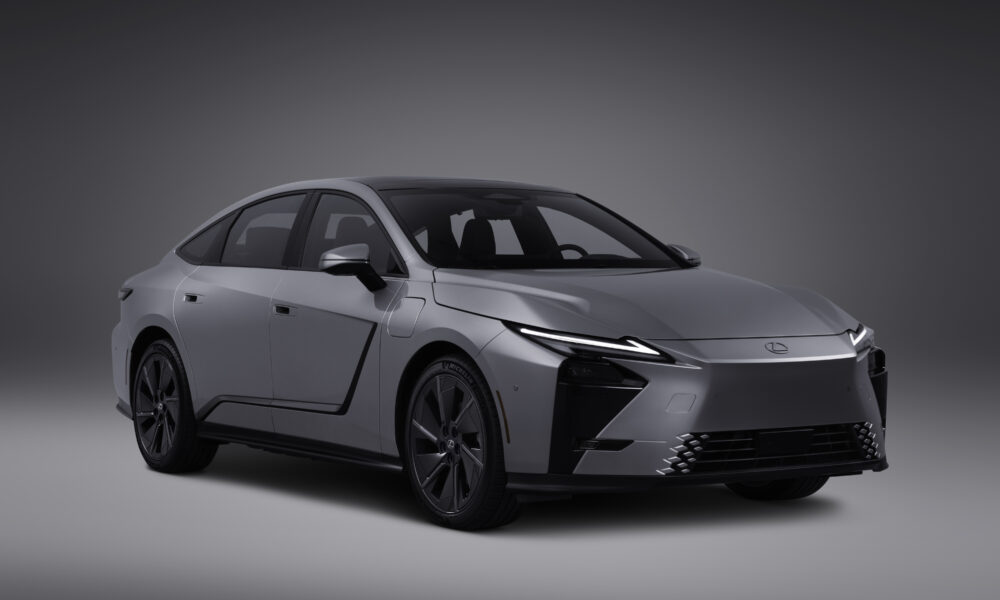A pyramid of champagne glasses on the hood of a Lexus LS 400, unperturbed by its revved up silky-smooth V8 engine.
For many, that’s still the image — from the iconic commercial that heralded the launch of the luxury automotive brand in 1989 — that comes to mind when they envision Lexus. Because, truth be told, those luxury traits still hold true — even more so today than they did 32 years ago.
But it’s also true that, today, there’s more to the Lexus story than just raising the bar on luxury.
Starting with the introduction of the first IS F sedan in 2008, the essence of what makes a Lexus a Lexus has gradually and steadily expanded to include the notion of performance. And it’s an evolution that really began to shift into high gear with the factory introduction of the F SPORT banner with the 2011 IS models.
A decade later, every model in the Lexus lineup — including its SUVs — has a role to play in this change. And with Master Driver and Toyota Motor Corporation President Akio Toyoda at the helm, it’s safe to say the trend will continue.
“We know historically what our image has been,” said Richard Hollingsworth, senior analyst in Lexus Product Marketing. “But we’ve shown that we can bring high-performance vehicles to market. And, the fact is, we’ve really only just begun.”
Hollingsworth admits that in its first iteration, the F SPORT package was about giving the IS (and later models like the GS, LS and even ES) more of a performance look through distinctive wheels, badging, exterior colors and interior enhancements with some suspension tweaks. SUV customers also got to join the party, starting with the RX in 2013, followed by the NX and UX when they made their debuts.
The F models, though, were the real deal with bigger engines and beefier suspensions — with the limited-production LFA supercar serving as the ultimate expression of Lexus’ high-performance capabilities.

Lexus IS 500 F SPORT Performance
And then, last spring, Lexus unveiled the 2022 IS 500 under the heading of F SPORT Performance. Its 472-horsepower 5.0-liter V8 engine made it clear that the brand was once again raising the stakes on performance, shifting the F SPORT concept a notch or two closer to that of the F.
This foreshadowing came into much sharper focus at last fall’s SEMA Show in Las Vegas, where Lexus announced that the brand’s performance range would expand to four distinct ranges:
- F SPORT Design — With an emphasis on sport-inspired exterior design through such elements as unique front and rear bumpers, grille, wheels and colors.
- F SPORT Handling — Builds on the Design elements and adds sport-tuned suspension components honed on the track, such as Lexus’ Adaptive Variable Suspension system.
- F SPORT Performance — Includes all of the above and adds a higher performance powertrain (such as the IS 500’s big V8).
- F — The highest expression of Lexus performance, including such track-tested components as beefier brakes, advanced aerodynamics and lightweight carbon fiber materials.
In other words, Lexus’ move down a performance path is not some leisurely stroll. Rather, it’s a coordinated and concerted effort to expand its appeal beyond its traditional customer to the next generation of customers who crave an adrenalin-inducing look and feel as much as the warm and comforting embrace of refined luxury.

Lexus Electrified Sport Prototype
Toyoda’s reveal in December of what the automotive media is calling the BEV successor to the LFA might suggest where all of this is heading. But in the meantime, the brand’s performance strategy is already paying dividends.
“There is a very strong appetite in the market for this kind of differentiation,” Hollingsworth said. “Lexus sold over 300,000 new vehicles in the U.S. last year and a good number of them were F SPORT, ranging from 60% of IS to around 20% for most of the other models. So, this isn’t just about what’s fun for us as product developers and marketers. It also makes good business sense.”
In other words, F SPORT is moving the needle — in more ways than one.
Originally published February 23, 2022


 Add to Cart
Add to Cart Print
Print Convert to PDF
Convert to PDF


